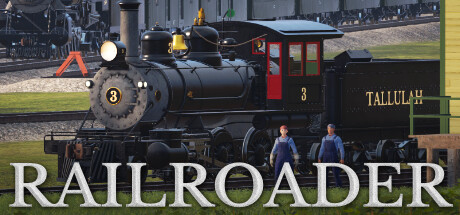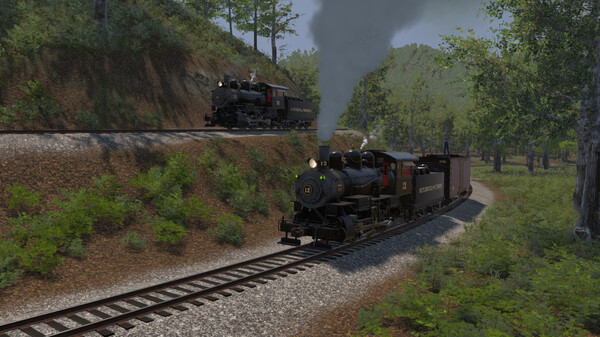Railroader
by Giraffe Lab LLC





The Developer Says...
You and your fellow railroaders are the lifeblood of your railroad, just like it is the lifeblood of the communities it serves. Switch cars at industries. Keep people moving while running local passenger trains. Run trains with a purpose in transition era Appalachia – in Railroader!
Keywords
Players Like...
❤ You Take the Reins of a Transition Era Short Line Railroad
At the heart of this game, you run a small short line railroad in the Appalachian mountains during the transition era. The gameplay focuses on the logistics and management of freight car movement, blending railroad operations simulation with company management.
❤ Deliver Freight with a Purpose
The game emphasizes "purpose" behind each car movement. You receive freight cars at the interchange yard, tagged for their destinations. Your task is to efficiently route these cars to the appropriate industries, pick up the loaded cars, and return them to the interchange. This creates a continuous cycle of car movement that feels true to real-world railroad operations. To succeed, you must consider factors like customer contracts, car schedules, and network efficiency when planning your operations. Delivering freight isn't just about moving cars from A to B - it's about understanding the "why" behind each delivery.
❤ Grow Your Railroad Company Over Time
As you complete contracts and deliver freight, you earn money to purchase new locomotives, rolling stock, and infrastructure upgrades. The progression system is structured around "milestones" that unlock new areas of the map, additional industries, and more complex operations. Your management decisions directly impact your ability to upgrade and expand. Factors like reputation, contract fulfillment, and financial performance all contribute to the long-term success of your railroad company. This encourages you to carefully balance your operational choices.
❤ Flexible Gameplay to Suit Your Preferences
The game offers both "company mode," where you manage the overall railroad, and "sandbox mode," where you focus on the hands-on operation of locomotives and switching. This flexibility allows you to tailor the experience to your preferences. You can also let AI-controlled engineers handle the locomotive controls, freeing you up to focus on the higher-level management and planning. This helps to balance the simulation complexity with accessibility for a wider range of players.
❤ A Unique Blend of Railroad Simulation and Management
The game's attention to detail in recreating the logistics and decision-making involved in running a short line railroad, combined with its progression system and flexible gameplay modes, have resonated with both hardcore train enthusiasts and casual players. The game's strong foundation and continued development make it a standout entry in the railroad simulation genre.

